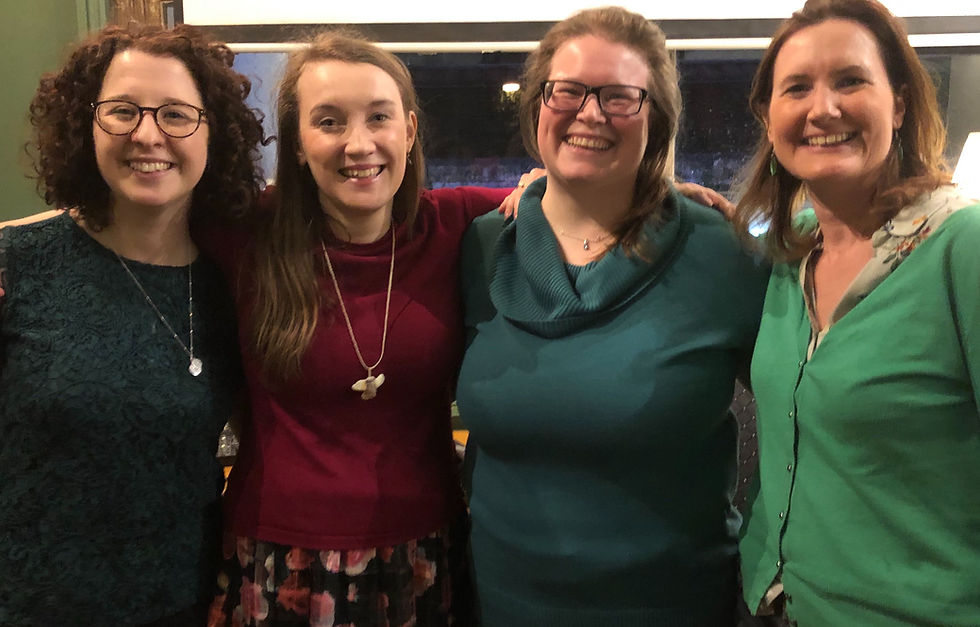Conversations on Invisible Women
- Feb 26, 2020
- 4 min read
For our first ‘Conversations on...’ event, the One HealthTech Bristol team hosted a book club featuring - Invisible Women: Exposing Data bias in a world designed for men by Caroline Criado Perez. We became interested in this book after discussing some shocking statistics - such as the now infamous example of women being less likely to survive a heart attack because their symptoms are different from those of men - at our event on responsible AI last November. Less recognisable symptoms meant missed chances of timely treatment and worse outcomes for women and also the men who did not exhibit a ‘traditional’, ‘Hollywood-style’ heart attack! One of the reasons for this situation is inconsistencies in data, or more specifically – a gender data gap. Caroline discusses how the lack of sex-disagregated data affects women and other minorities in different areas of life: daily and public life, the workplace, product design and most importantly for our OHT readers, healthcare.

Setting the scene
We wanted to make the evening accessible to those who hadn’t had chance to read the whole book, so I started by giving a brief insight into its main themes to aid the group discussion.
It is important to understand exactly what the gender data gap is and I think it is best explained by examples. It can be lack of sex-disagregated data in datasets such as the results of drug trials or the statistics of transportation use. In this case, women form part of the population that was surveyed, but the label which denotes sex is missing, making it impossible to determine any differences between the sexes in subsequent analysis. However, a potentially even worse case is exclusion of women and minorities from certain datasets, entirely by either accident or design. Interestingly, I found that women’s health was affected by data gaps in a whole host of areas, not just medicine.
Before having further discussion on the effects of the gender data gap, it is useful to take a step back and look at the causes. One of the main reasons, which reverberates throughout the book, is the tendency to think that the way men (and a very specific class of men) experience the world is a good approximation for the rest of humanity. It could be tempting to have this view, as it allows us to simplify planning and design processes, and we are all humans after all – shouldn’t that mean that there is a large commonality to our experiences?
In this particular book, the difference in experiences has been analysed through the lens of women. Typically, men, who are still the majority of decision makers in policy and design, regard women’s lives and experiences as niche, unusual – other. Not recognising that there are other objective identities apart from white and male leads to disastrous decisions for the majority of the world's population.
In general, use of gender is a thorny issue when AI and data is concerned - a recent move by Google has removed the use of gender labels in their image recognition algorithms to reduce bias. Nevertheless, this does not change the necessity to create widely diverse datasets and label them appropriately and with care, considering which labels should be used and in which instances.
Group discussion
While some of the attendees hadn’t been able to read the book beforehand, it did not stop the small group discussions, since everyone had an opinion or experience to contribute. These ranged from personal to professional, once again showing that lack of sex-disaggregated data and the prevalent attitudes affect every aspect of our lives.
We talked about personal experiences of unpaid care work such as childcare, and the shock of women not being included in clinical trials and being at a disadvantage when applying to jobs due to biased or lacking data. The medical professionals in the audience shared their experience of the differences between male and female patients in their medical practice.
One of the outcomes I wanted to achieve was to look at the causes and solutions of the gender data gap. Some of the causes we identified included lack of diverse decision makers and hence perspective, as well as the sometimes prohibitive cost of design and innovation to fully include the necessary diversity. In part, this may be due to conservative attitudes, especially in fields like clinical trials and pharmacology.

What are some of the opportunities to create a more inclusive future? We can all consider our own privileges and use those to empower others. One of the goals of One HealthTech is to make sure that everyone's voice can be heard. So by supporting us you can be part of that change!
While, of course, we were unable to fully investigate the problem within this short timeframe, I felt like we all had deepened our understanding. Therefore, I believe that the first “Conversations on..” event was a success and we will certainly run more of these in the future. We are looking forward to seeing you at one of our next events - next up, Navigating your HealthTech Career, on Thursday 12 March.
Join One HealthTech and tick the “Bristol” box to make sure you hear about all our upcoming local events and opportunities.
.png)

